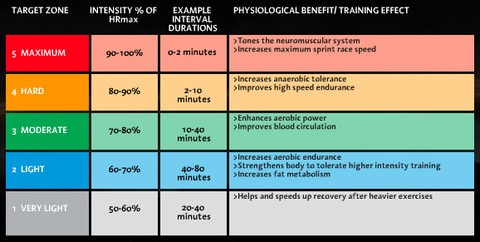
You train at different intensities and duration to vary the stresses your training has on your body. Assuming that you allow proper recovery then these stresses are turned into a better, fitter and faster you. You adapt to cope. You improve.
So what is the Long Slow Run (LSR)? Otherwise called Long Steady Run or Long Slow Distance. & Why should I do one?
I’ll answer the “Why?” first of all.
- Your cardiovascular function will improve.
- Your ability of your body to regulate heat will improve
- You will get better at burning fat to fuel your running (rather than muscle/carbs)
- Your muscles will get better and producing energy; and
- Mitochondria produce energy better.
So your energy and oxygen pathways are basically all improved at various levels.
With slower running you can train more frequently and/or more further and you can certainly also better focus on your technique. Because you can run for longer then you can stress your body for longer. Apparently scientists say that 2 hours can be better than 2x 1 hour in this sense.
Think about it. Many of us used to do our run around the block a few times each week. We got faster and fitter. Yet at some point we plateaud. And after that point it was hard to improve. Why? Well because the stimulus was broadly the same and sure enough your body got good at doing ‘it’. Whatever ‘it’ was. Yet when you tried to run further in a 10k race you may well have struggled at this new distance.
Think some more. If you do sprint training. You can do it again and again and again and you will get faster but it won’t translate into a marathon. Apparently I could beat Usain Bolt over 5k or further…but so what? Similarly marathon runners will be able to do a good 400m time but will not come close to winning anything at that distance.
So, on this anecdotal discussion, our bodies do seem to need different training stimuli for different distances. And that is especially true for 5k where endurance right the way through to speed are ALL important.
So you will need to train at different speeds and durations. Perhaps with pace and heart rate measuring differing intensities. You will train your aerobic threshold, your anaerobic threshold, your VO2 max, your lactate threshold. All those bits.
As a 5k runner you will need to train them ALL. As a marathon runner you don’t really need much speed training at all and as a sprinter you need no endurance training at all.

The thing with longer runs however is that their benefits stay longer BUT are harder to gain. This is why ENDURANCE athletes build most of their ENDURANCE BASE in the off-season, usually the winter.
Speedwork can have quite quick gains but they are more easily lost. And you may also get more easily injured. Your body will be more resilient to speedwork’s stresses if you have an endurance base already sorted. You will get most benefits from speed training as you approach your race day (actually about 2 weeks before race day).
So back to the earlier question of “WHAT is a LSR?”
The answer to “What is long?” and “What is slow?” depends on the distance you are training for.
You have enough carbs for about 90 minutes of running/racing – THAT IS IMPORTANT. And it is what reason why marathon runners will tell you to run further than perhaps you, the 5k (or 10k) runner, will need to. They (marathon runner) have to refuel their body and push that ‘barrier’…you don’t. Plain and simple. It will help you a bit to do the above whereas they HAVE to do it.
So for a 5k runner (I’m not talking about international athletes here or super county runners) your long runs ‘only’ need to be about 60-90 minutes TOPS.
But how fast do you need to go?
Firstly, get your heart rate (HR) zones sorted out. There are no shortcuts, just do it!
If you are strapped for time in your life then NEVER do a Zone 1 run. That is, to all intents and purposes, a recovery run. A slow run is a Zone 2 run. I would say that you should be running at the upper end of your Zone 2 for 60 minutes.
If you can do that without your pace changing that much (towards the end) then do it for longer. Or, for one third of your run time, do repeated shorter ‘intervals’ where you go into Zone 3 for up to 5 minutes.
If you think LSRs are easy. Think again. They are NOT called Long Easy Runs. To run on the edge of your HR Zone 2/3 for 90 minutes is not easy. If it is easy for you then your zones are wrong.
There are of course variants on the above but the runs I’ve shown will do for now. Incedentally they come from Joe Friel (who is probably the world’s best known triathlon coach).
Remember that if you are training for 5k as part of a duathlon or triathlon then you will probably need to train as if you were racing a 10k as you will be starting your 5ks in a fatigued state.

Nice article, i will reblog it to my site, thanks
Reblogged this on christostriathlon1.